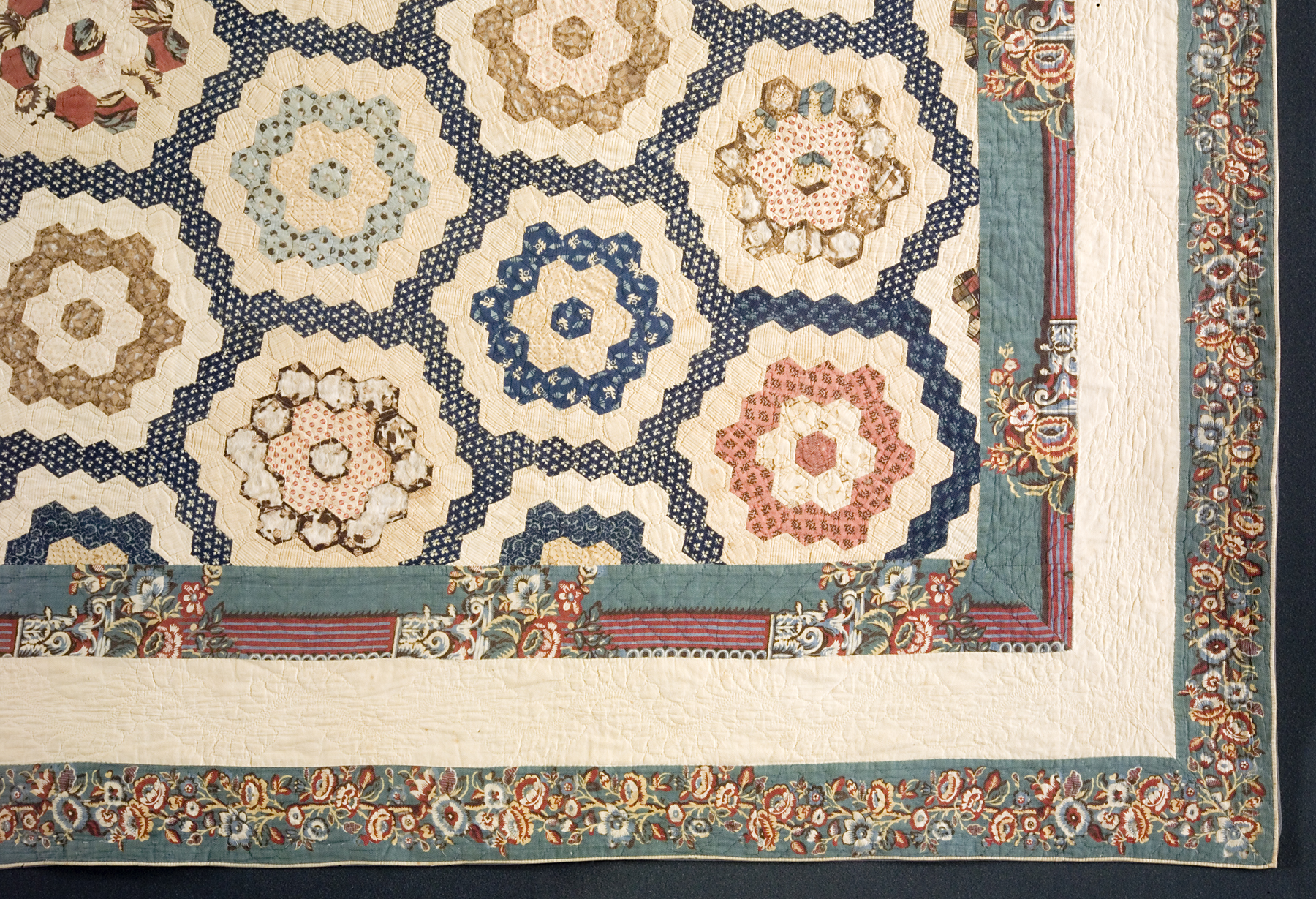Grandmother's Flower Garden quilt, or Hexagon quilt, unknown maker from the United States
Artwork Overview
Grandmother's Flower Garden quilt, or Hexagon quilt
, circa 1825–1850
Where object was made: United States
Material/technique: quilting; chintz; piecing; cotton
Credit line: William Bridges Thayer Memorial
Accession number: 1928.0926
Not on display
If you wish to reproduce this image, please submit an image request














